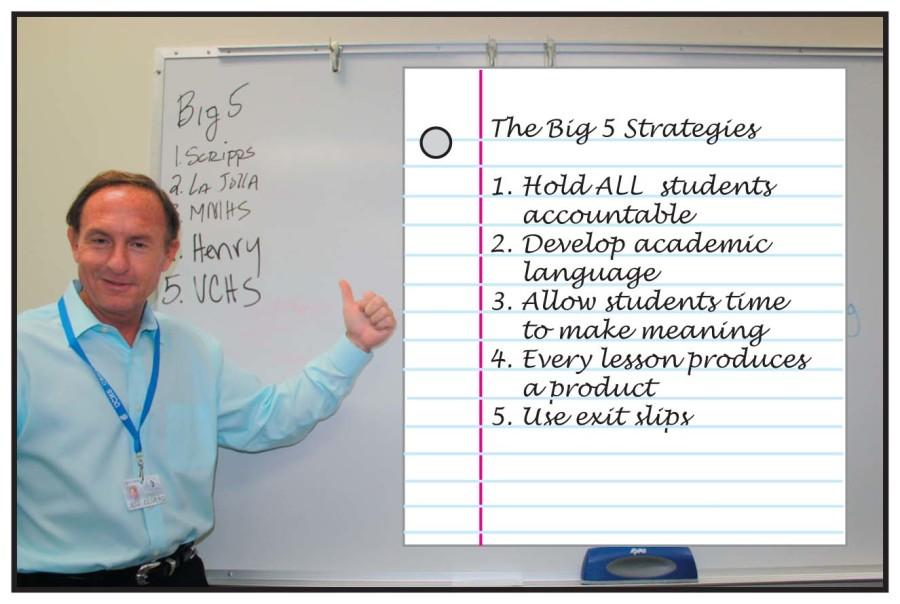Principal Jeff Olivero introduced the new “Big Five Strategies” to teachers last year in an attempt to enhance the academic environment in UC High classrooms.
Recently, students have been seeing Olivero entering and observing their classrooms. Olivero said, “My presence in classrooms is to work side by side with teachers to improve the student learning.” According to Olivero, the Big Five Strategies are connected to the Big Five Schools, which are these top-listed high schools: Scripps Ranch, La Jolla, Mira Mesa, Patrick Henry, then University City. Olivero has high hopes that these five strategies will eventually make UC better than the other schools in terms of teaching and learning.
Olivero stated that the first strategy is to hold all students accountable, asking teachers to call on random students to answer questions related to the class course. Science Teacher Jeff Holloway said, “I think it helps to remind the students of how high my expectations are. By doing that, students learn to work more effectively.”
The second teaching strategy is to develop academic language. Olivero wants students to use “brick and mortar” words, “brick” words that relate what they say to class concepts, and “mortar” words that connect those concepts together.
“Developing academic language is critical for students’ success,” English Teacher Richard Norton said, “Academic language is the vocabulary of each discipline, and for students to understand the concepts and ideas of that discipline, they must understand it’s vocabulary.”
According to Olivero, students need blank spaces, or time during class assignments, to think about what they are working on. Olivero said, “It grants the students the ability to read, stop, pause, and think about it.”
This leads to the third strategy, to allow students the chance to make meaning. Junior Marlene Alonzo believes students should have voices of their own, but only to a certain extent. She explained, “It allows a student’s personality and originality to shine through. Personal space is a healthy practice in any assignment; although, too much freedom may confuse a student and disrupt structure and standards.”
The last two strategies require that every lesson produce a product and encourage the use of “exit slips.” Olivero said that the former is for teachers to make sure that students produces a body of work that enhances their understanding of what they have just learned. Exit slips help teachers to make sure that, upon exiting their classrooms, students have understood the lesson and concepts taught.
Math Teacher Phillip Huszar believes that exit slips are essential to concluding a day’s lesson. He said, “I personally have not done much with exit slips specifically, but having problems at the end of my lessons, that encapsulate the most important aspects of the lesson, are something that I feel are a must in a math lesson. I believe that exit slips are one particular strategy, under a larger umbrella of nee,d for every lesson.”
Olivero said, “These are instructional strategies for teachers, that I don’t always see being done across the board. However, I happen to believe if we can effectively use them in every classroom with every lesson, learning will be tremendously enhanced.”

